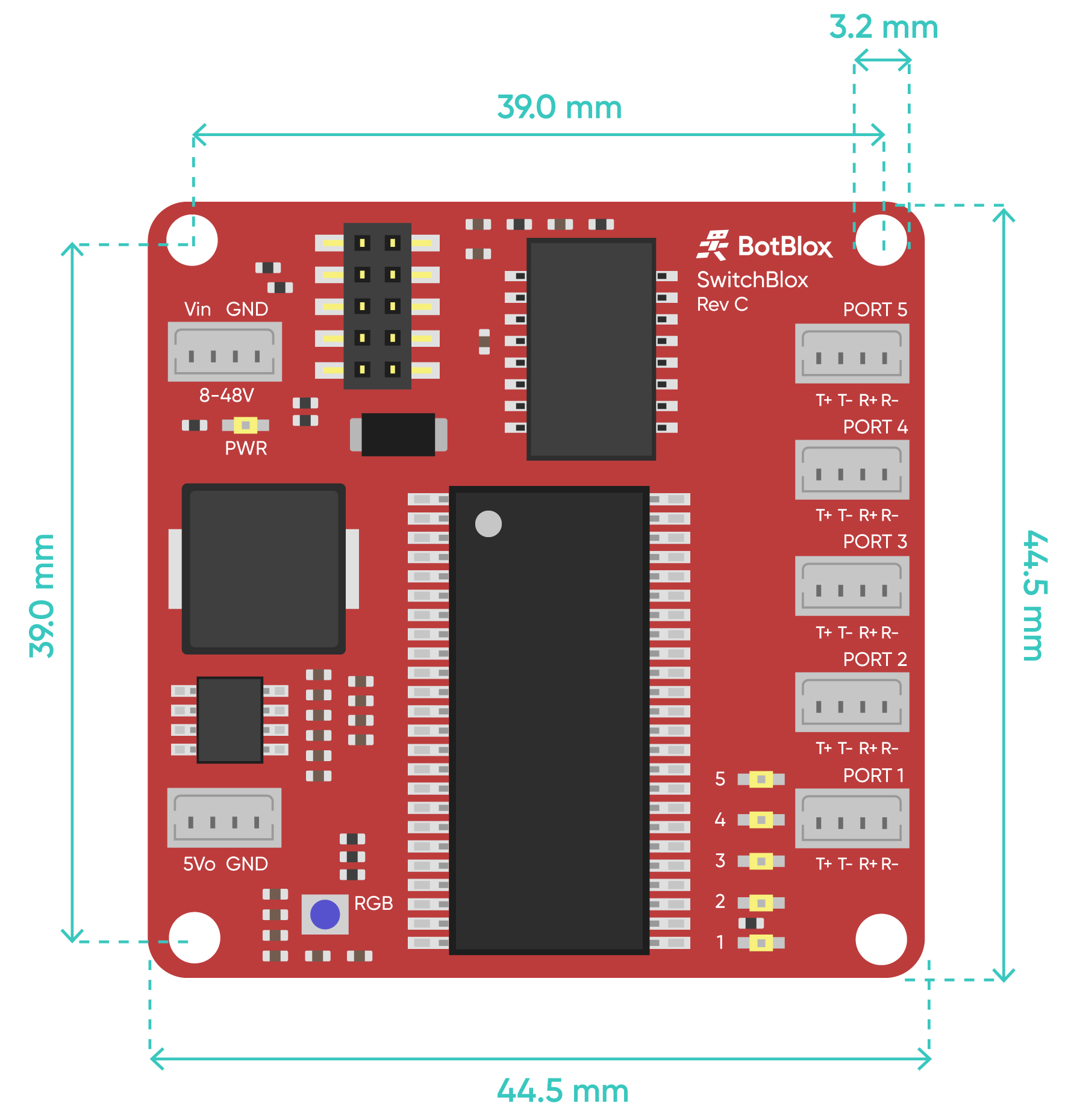...
SwitchBlox 5-Port Ethernet Switch
Backplane Connector Pinout
Pinout
| Description | PIN | Description | |
|---|---|---|---|
| Battery Voltage | 1 | 2 | Battery Voltage |
| GND | 3 | 4 | GND |
| 5v | 5 | 6 | 5v |
| GND | 7 | 8 | GND |
| 3v3 | 9 | 10 | 3v3 |
| GND | 11 | 12 | GND |
| TX+ | 13 | 14 | RX+ |
| TX- | 15 | 16 | RX- |
| ADDR 0 (LSB) | 17 | 18 | ADDR 1 |
| ADDR 2 | 19 | 20 | ADDR 3 (MSB) |
| LED 0 | 21 | 22 | LED 1 |
| GPIO 0 | 23 | 24 | GPIO 1 |
| GPIO 2 | 25 | 26 | GPIO 3 |
| GPIO 4 | 27 | 28 | GPIO 5 |
| GPIO 6 | 29 | 30 | GPIO 7 |
Pin Description
Voltage Rails
Battery Voltage, 5V, and 3V3 rails are provided by the power module.
- Ethernet
- RX/TX pairs are each tied to the output of the of the SwitchBlox Nano switch, so no crossover is necessary between RX and TX pins on the module.
- LEDs
- Two LEDs are present on the Backplane for each module, allowing quick viewing of module status.
- LED0 is a "loopback" LED indicating that a module is present. This pin should be shorted to the 5V voltage on each module. Alternatively, this LED pin can be pulled high by a microcontroller on the module upon receiving power.
- LED1 is for any general indication of module status. This LED can be driven however the module owner sees fit.
- These LEDs may be disabled during flight to save power.
- Address pins
- Each module slot on the Backplane will have a unique address assigned to it. These pins will either be pulled to GND or 5V to indicate to the module what the address is. (eg. all pins pulled to GND indicates module slot 0, ADDR0 at 5V indicates slot 1, etc.)
- These pins should be read by the module and used for purposes such as logging, verification of flight configuration, etc.
- GPIO pins
- These pins are made available to each module such that there is little need for each module to have wires coming off in every which direction.
- The 8 GPIO pins and 1 GND pin will be broken out to a DE-9 connector for each module.

